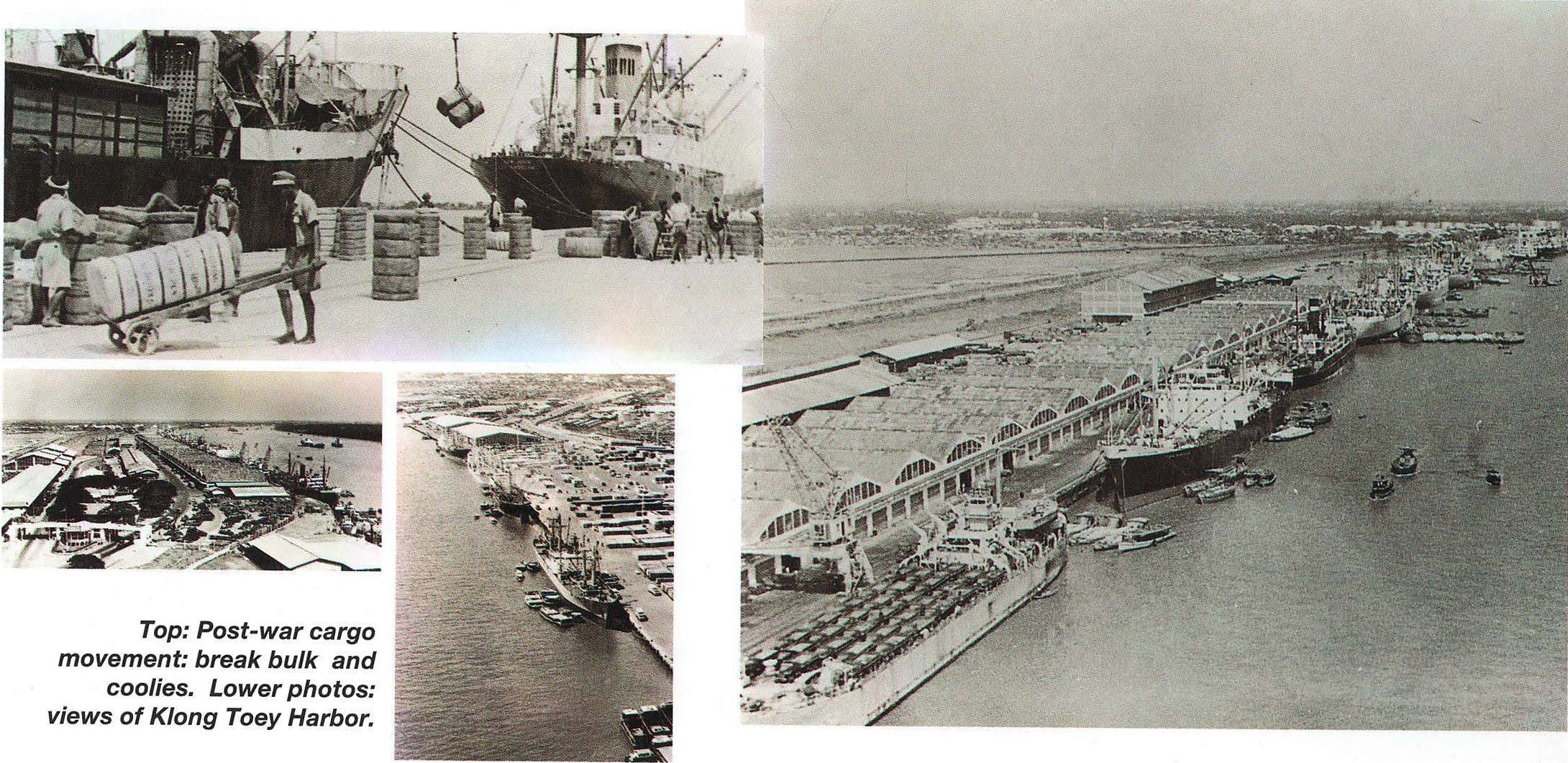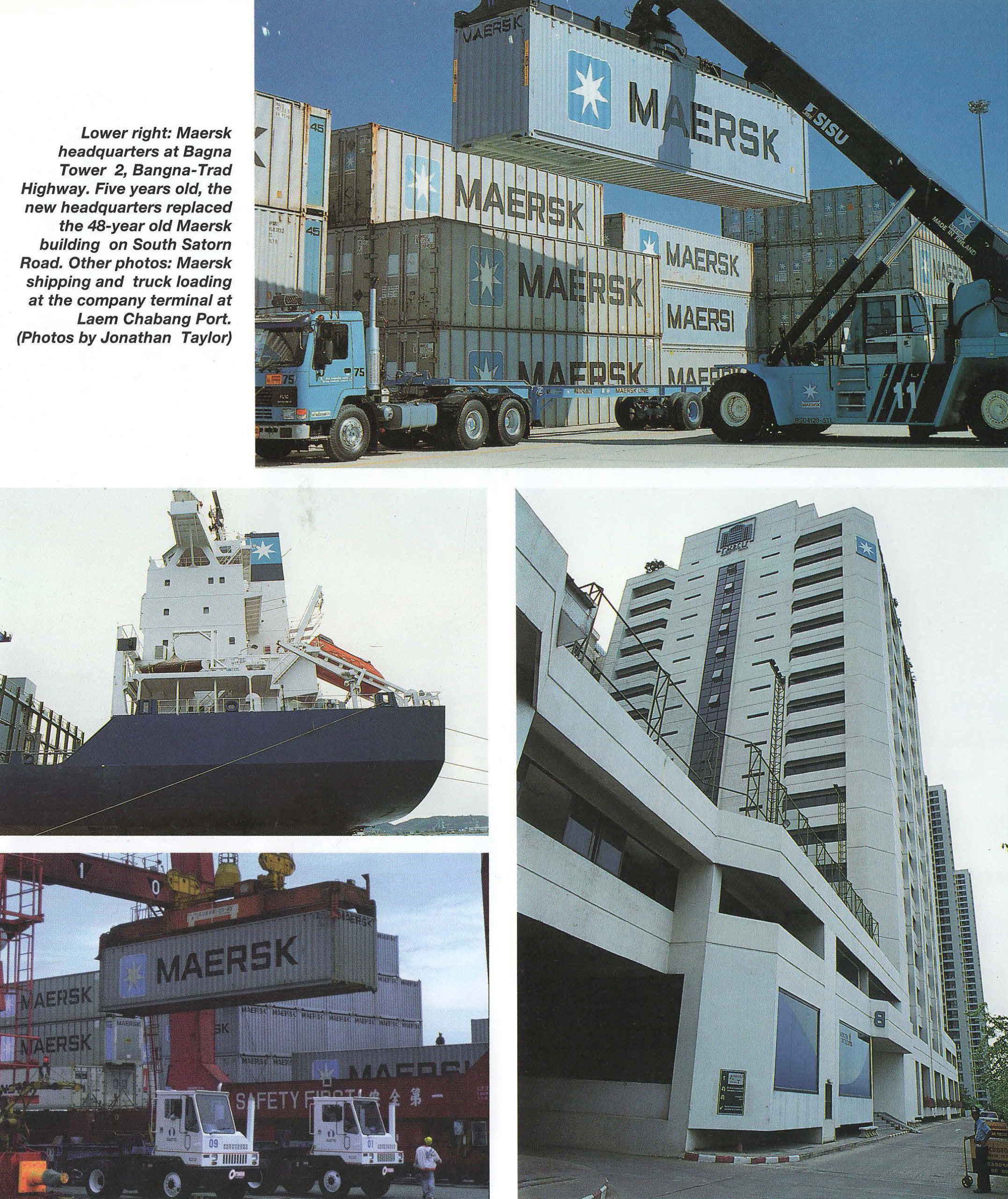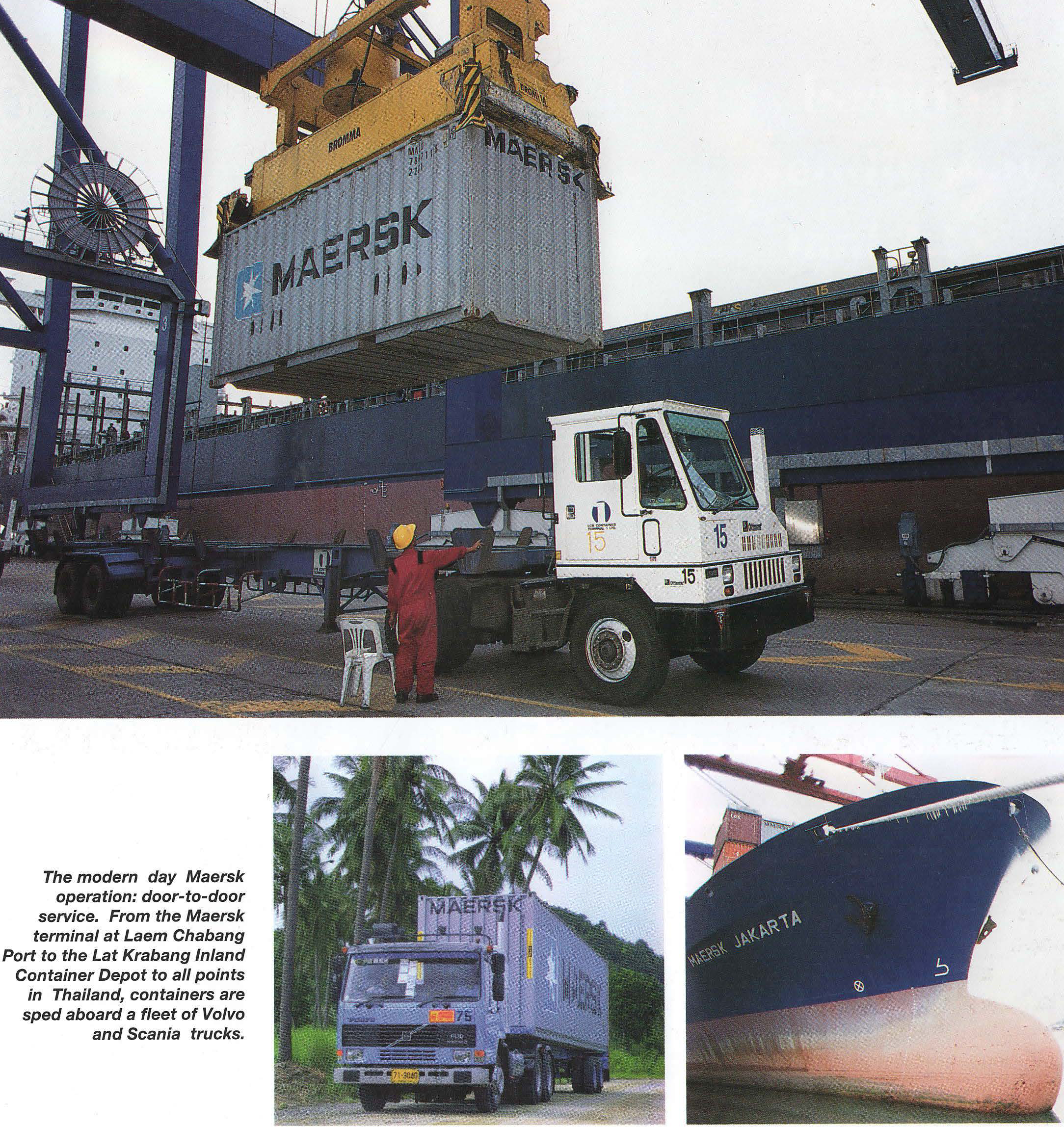
“The first Maersk shipment to Thailand was railway equipment from Japan. That was in 1948. A year later, Maersk Line set up an office and a regular route from Thailand to Japan. In 1951, the company moved its headquarters to South Sathorn Road. In February 1994, we moved out here to the Bangna Towers, on the Bangna-Trad highway.”
– Anders Nielsen
By James Eckardt
Maersk is big. The company runs container ships as long as three football fields and there are 150 in the Maersk fleet plying the world’s trade routes for a total of seven million tons deadweight. There are 300 Maersk Line offices in 80 countries, employing 10,000 people.
This year, Maersk achieves its 50th anniversary in Thailand.
“The first Maersk shipment to Thailand was railway equipment from Japan,” says Mr. Anders Nielsen, Managing Director, Maersk Bangkok.
“That was in 1948. A year later, Maersk Line set up an office and a regular route from Thailand to Japan. In 1951, the company moved its headquarters to South Sathorn Road. In February 1994, we moved out here to the Bangna Towers, on the Bangna-Trad highway.”

The new headquarters symbolizes the shift of the company’s shipping from Klong Toey to the new port of Laem Chabang further down the highway. Maersk occupies one of five terminals at Laem Chabang: a berth length of 300 meters at a water depth of 14, serviced by four gantry cranes in a yard area of 178,000 sqm, with a handling capacity of over 400,000 teu. Big.
“We started using the new port in a small way in 1993,” comments Mr. Nielsen.
“We took over our own terminal on a long-term lease in 1996. On May 1st last year, we closed down our Klong Toey operations. Our last feeder line up the Chao Phraya shut down a year and a half ago. It was the end of an era.”
The new port circumvents the congestion of Klong Toey and downtown Bangkok, providing faster, more efficient, more cost effective service to Maersk clients.
“And despite the Asian crisis, the government came through with its promises for new roads to the port,” adds Mr. Nielsen.
Both road and rail connections lead 110 km away to the Lat Krabang Inland Container Depot, close to Bangkok, constructed by the State Railway of Thailand in 1996. Here Maersk occupies one of six terminals: 127.000 sqm in area, 6,000 teu storage capacity, 148 reefer plugs, with track connections to 16 daily container trains and a Maersk trucking fleet of 60 Volvos and Scanias. Plus on-site customs clearance and import/export licences.
“Our philosophy is to do everything in-house,” explains Mr Nielsen.
“We don’t rely on suppliers but provide door-to-door service with our own equipment and our own personnel. It’s one stop shopping – service all the way.”
“I see the Lat Krabang terminal as a major improvement in Thailand’s transportation efficiency, and the rapid growth of Laem Chabang Port will make Thailand an important player in the shipping industry.”

Besides Maersk Bangkok Branch, there are three subsidiary companies in Maersk Group Thailand. Bangkok Marine Company, established in 1973, is the agent for shipping to Vietnam, Cambodia and Western Australia, with branch offices in Chiang Mai and Songkhla. Established ten years later, Siam Shoreside Services runs the trucking fleet and the Lat Krabang and the Sanpawut Road inland container depots. Since 1981, Mercantile Consolidators has been offering a complete menu of specialized services: supply chain management, documentation, customs clearance, pick and pack, barcoding, ware housing, forwarding, air freight and door delivery. Altogether Maersk employs 400 people in Thailand.
“This has been our best year ever,” says Mr Nielsen.
“Imports are down but exports are up significantly. For shipping lines, the trade imbalance means we have to ship empty containers to Thailand, raising costs. Inter-Asian traffic has gone down, while exports to Europe and the US have risen.”
When trade picks up or slacks off, a shipping company is the first to know. Mr Nielsen points to a recent rise in the imports of car parts as indicating a rise in automobile and truck manufacturing. In 1998, Thai imports fell by 33% against the year before, while exports fell 7%. But the first months of this year have seen a slow rise in both imports and exports.
“I see trade rising now but the biggest problem is in ensuring sustainable exports,” Mr Nielsen maintains.
“There is an increase in volume but a decline in value, measured by US dollars. This is due to the floating baht but exports would steam ahead even faster if the banks would finance exporters. The government’s stimulus package will help overcome the credit crunch and get commercial banks to start lending money again. Trade does look better in value terms over the past couple of months. February was a turning point, with a higher volume of imports. More importantly they are the right kind of imports, not consumer goods but raw materials and semi-finished products for the export industry. This is how things should be.”

Anders Nielsen speaks with the benefit of 26 year experience in the shipping industry. He joined Maersk in 1973. Starting out in Copenhagen in the tanker trade, he worked for Maersk in Taiwan, England, Brazil and Portugal before becoming Maersk’s Managing Director in Bangkok four years ago. He brings a certain perspective to the current Asian crisis. During his stint in Rio de Janeiro, from 1985-1989, he saw inflation rise one percent per day.
“In Brazil, there were political problems which prolonged the economic crisis. The difference here is that the Thai government saw what the problems were and they took measures to implement a solution. They knew what they had to do and they did it – not just talk. I’m optimistic.”
Six years ago, Maersk extended their Danish trainee scheme worldwide.
“As a global company, we had to reach out to a much larger population pool base than just Denmark,” comments Mr Nielsen.
“So far, thirty Thai college graduates have been recruited for the Maersk training program. They’ll work and study here for two years, going to Copenhagen occasionally for special courses and exams. Afterward, they’ll be posted to another country and then back to Thailand or to a third country – so the young people in Maersk have equal career opportunities.”
Beyond recruitment, Maersk is also advancing technologically. Customers are linked to its computer system so they can track the progress of shipments.
“As information is updated on our computers, so it is on theirs,” says Mr Nielsen.
“Information technology complements a streamlined infrastructure of ports, inland terminals and a trucking fleet, so that we accomplish our main goal: making things easier for our customers.”
(Photos by Jonathan Taylor)



